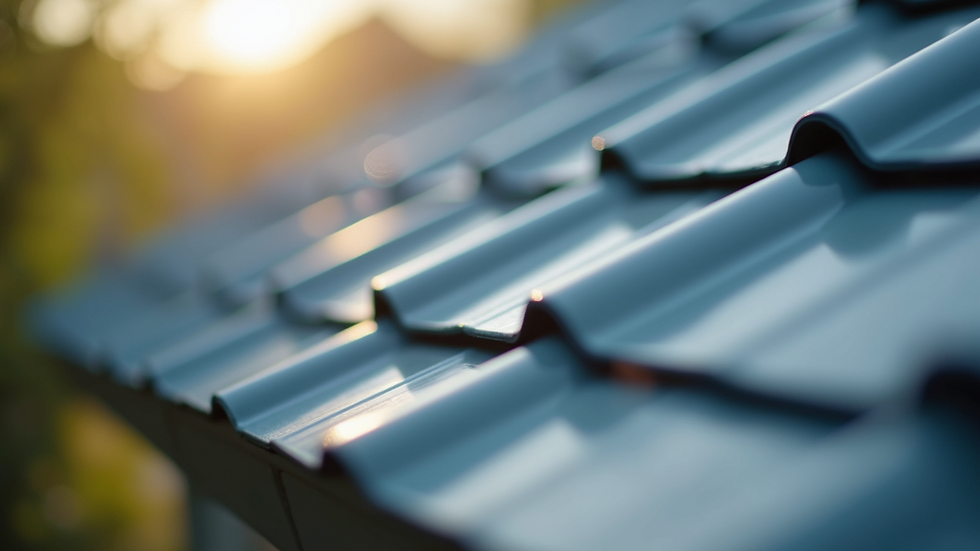Top Factors to Consider When Choosing a Roof for Your Home
- Marcos Garza
- Oct 1
- 4 min read
Choosing the right roof for your home is a critical decision that affects your property's safety, appearance, and value. A roof protects your home from weather elements, enhances curb appeal, and can even improve energy efficiency. With so many roofing materials and styles available, it can be overwhelming to decide which option is best for your needs. This guide will walk you through the top factors to consider when selecting a roof for your home roofing project.
Understanding Your Home Roofing Needs
Before diving into material options, it’s essential to assess your home's specific roofing needs. Consider the climate in your area, the architectural style of your house, and your budget. For example, homes in regions with heavy snowfall require roofs that can withstand weight and prevent ice dams. Meanwhile, homes in hot climates benefit from materials that reflect sunlight and reduce cooling costs.
Key considerations include:
Durability: How long will the roofing material last under local weather conditions?
Maintenance: What level of upkeep does the material require?
Aesthetics: Does the roof style complement your home’s design?
Cost: What is your budget for installation and long-term maintenance?
Taking time to evaluate these factors will help you narrow down your choices and avoid costly mistakes.

Popular Roofing Materials and Their Benefits
There are several common roofing materials, each with unique advantages and drawbacks. Here’s a breakdown of popular options:
Asphalt Shingles
Pros: Affordable, easy to install, widely available, and come in various colors.
Cons: Shorter lifespan (15-30 years), less eco-friendly.
Metal Roofing
Pros: Extremely durable, fire-resistant, energy-efficient, and recyclable.
Cons: Higher upfront cost, can be noisy during rain.
Clay or Concrete Tiles
Pros: Long-lasting (50+ years), excellent for hot climates, visually appealing.
Cons: Heavy, may require reinforced roof framing, expensive.
Stone Coated Steel
Pros: Durable, low maintenance, fire-resistant, and available in various styles.
Cons: Higher initial cost compared to traditional roofing materials, can be noisy during rain or hail.
Slate Roofing
Pros: Very durable, elegant appearance, fire-resistant.
Cons: Very heavy and costly, requires professional installation.
When choosing a material, think about how it fits your lifestyle and the architectural style of your home. For example, clay tiles are perfect for Mediterranean-style homes, while asphalt shingles suit most traditional American houses.

How much roofing do I need for a 2000 sq ft house?
Calculating the amount of roofing material needed is crucial for budgeting and ordering supplies. For a 2000 square foot house, the roof area is typically larger than the house footprint due to roof pitch and overhangs.
Steps to estimate roofing material:
Determine the roof’s square footage:
Multiply the house footprint by a factor based on the roof pitch. For example, a 6/12 pitch roof increases the area by about 12.5%.
2000 sq ft x 1.125 = 2250 sq ft roof area.
Convert to roofing squares:
Roofing materials are sold by the "square," which equals 100 square feet.
2250 sq ft ÷ 100 = 22.5 squares.
Add waste factor:
Add 10-15% extra for waste and cuts.
22.5 squares x 1.15 = approximately 26 squares.
This means you should order about 26 squares of roofing material for a 2000 sq ft house with a moderate roof pitch. Always consult with a professional roofer to get precise measurements and recommendations.

Energy Efficiency and Environmental Impact
Modern homeowners are increasingly concerned about energy efficiency and environmental sustainability. The right roofing choice can reduce your energy bills and carbon footprint.
Cool Roofs: These roofs use reflective materials to bounce sunlight away, keeping your home cooler in summer.
Recyclable Materials: Metal and slate roofs can be recycled at the end of their lifespan.
Insulation: Proper insulation beneath the roof can improve energy efficiency regardless of material.
When selecting a roof, consider how it will impact your home's energy consumption. For example, metal roofs with reflective coatings are excellent for hot climates, while well-insulated asphalt shingles work well in temperate zones.
Hiring a Professional for Your Residential Roofing Project
Choosing the right roofing material is only part of the process. Proper installation is critical to ensure your roof performs well and lasts as long as possible. Hiring a reputable contractor with experience in residential roofing is essential.
Tips for selecting a roofing contractor:
Check credentials: Verify licenses, insurance, and certifications.
Read reviews: Look for customer feedback and ratings.
Get multiple quotes: Compare prices and services.
Ask about warranties: Ensure both materials and workmanship are covered.
Request references: Speak with past clients about their experience.
A professional roofer will also help you navigate local building codes and obtain necessary permits. Investing in quality installation protects your home and your investment.
Final Thoughts on Choosing the Perfect Roof
Selecting the right roof for your home roofing project involves balancing aesthetics, durability, cost, and environmental impact. By understanding your home’s needs, exploring material options, calculating the right amount of roofing, and hiring a skilled contractor, you can make an informed decision that enhances your home’s value and comfort.
Remember, your roof is a long-term investment. Taking the time to research and plan will pay off in years of protection and peace of mind. Whether you prefer the classic look of asphalt shingles or the modern appeal of metal roofing, the perfect roof is within reach.






Comments